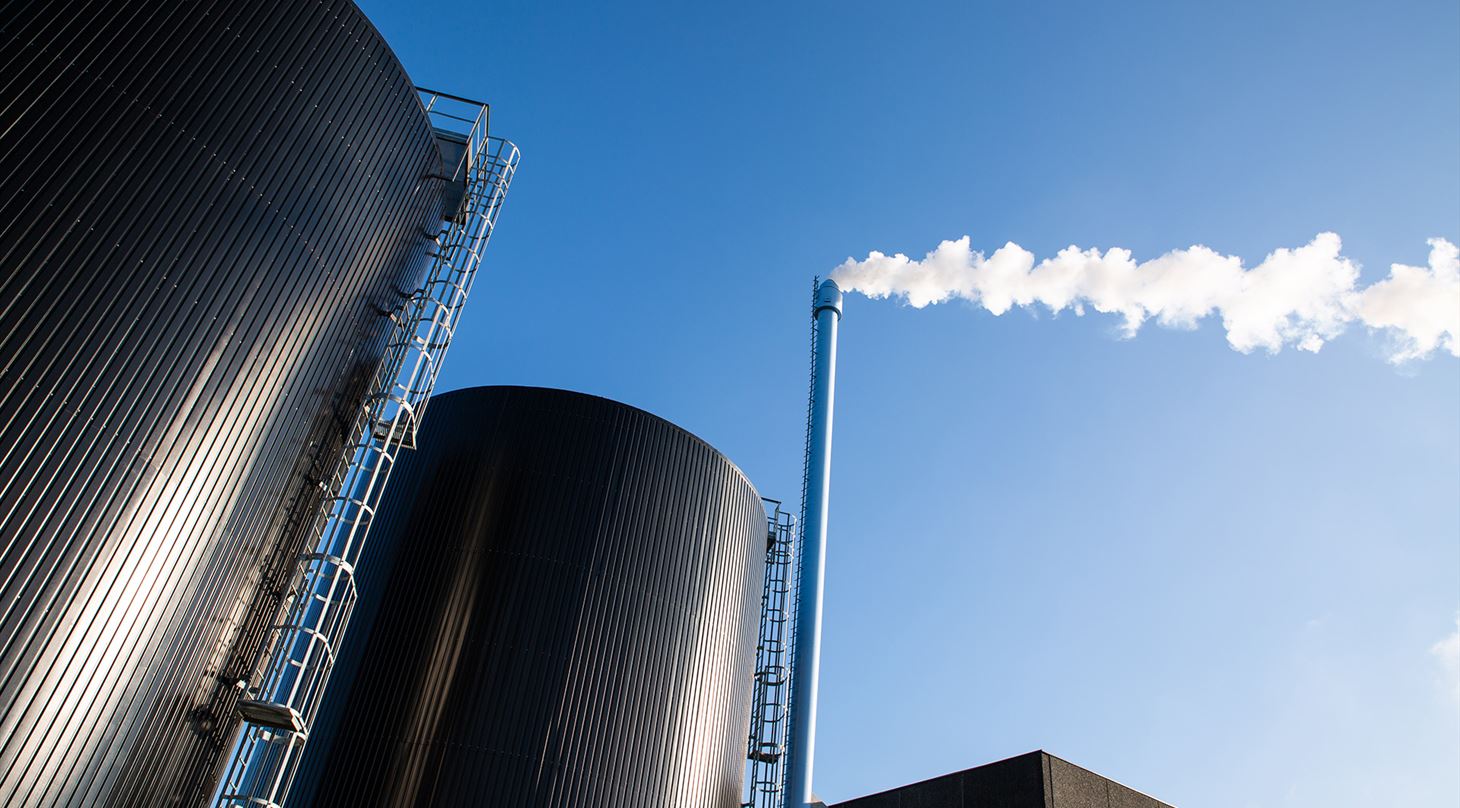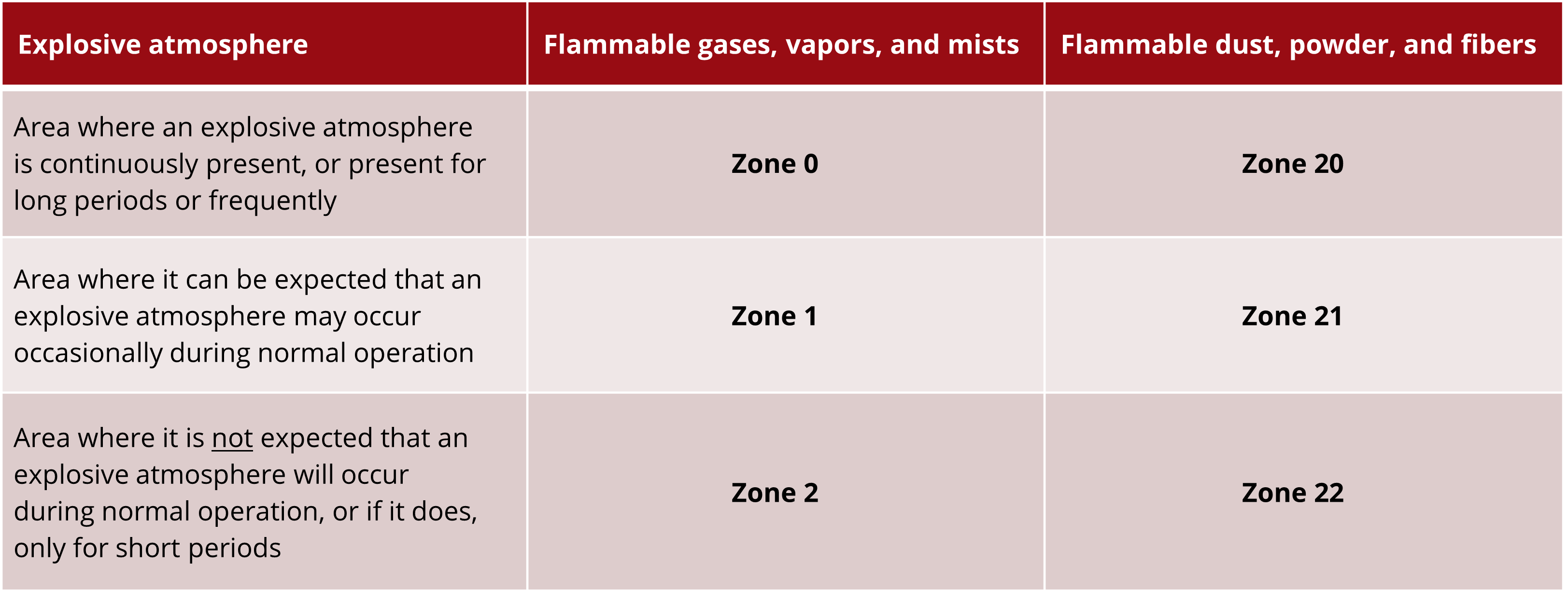
Hazardous area classification - ATEX Directive 1999/92/EC
A hazardous area classification is an important part of a company's ATEX risk assessment, as it forms the basis for the correct selection of ATEX equipment and other measures to be taken to reduce the risk of explosions.
All companies where there may be a risk from explosive atmospheres, as covered by the Danish Working Environment Authority's Executive Order no. 478 on work in connection with explosive atmospheres, must carry out hazardous area classification. When performing hazardous area classification, areas with the potential for explosive atmospheres must be classified into zones based on the frequency and duration of the occurrence of explosive atmospheres as follows:

The duty to classify hazardous areas into zones stems from the Danish Ministry of the Interior and Health's Executive Order no. 590 on the classification of hazardous areas. This order, along with the Danish Working Environment Authority's Executive Order no. 478, implements the ATEX Directive 1999/92/EC into Danish legislation.
Hazardous area classification is an administrative tool and part of a risk assessment that helps fulfill the regulatory requirements for the preparation of the extended workplace assessment, also known as ATEX risk assessment. The purpose of hazardous area classification is to identify and map areas with hazardous explosive atmospheres, so that employers and employees can take appropriate precautions to mitigate the risk of explosions.
Hazardous area classification also forms the basis for the correct selection of ATEX equipment, requirements for the installation and maintenance of equipment used in hazardous areas.
At a minimum, a hazardous area classification should include the following:
- A description of the facilities and areas where explosive atmospheres may occur.
- Basis for classification referring to applicable regulations and standards, as well as the establishment of criteria and assumptions.
- Identification of all flammable substances and specification of explosion parameters.
- Mapping of release sources and assessment of release levels.
- Evaluation of ventilation effectiveness and ventilation accessibility.
- Specification of zone type with corresponding physical zone extent.
- Development of classification plans as layout drawings.
When developing hazardous area classifications, the Danish Technological Institute primarily uses the standards EN 60079-10-1 (gas atmosphere) and EN 60079-10-2 (dust atmosphere), which provide recognized methods for meeting the requirements of the regulations. Where possible, calculations are performed, taking into account the specified assumptions for individual facilities to achieve more accurate and usable results.
The Danish Technological Institute also offers the development of classification plans with zoning hatching on layout drawings and according to other instructions specified in the standards.